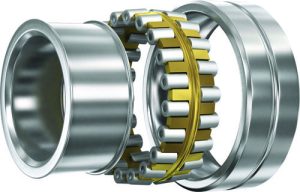Introduction
The diagnosis of bearing issues through auditory analysis is a crucial aspect of machinery maintenance. Sound variations often indicate potential problems in bearings, which, if detected early, can prevent costly repairs and downtime.
The Science of Sound in Bearings
Understanding Sound Patterns
Bearings typically emit a consistent, low sound during normal operation. Any deviation from this pattern suggests an issue. Key changes to listen for include:
- Increased Volume: A significant increase in sound level can indicate excessive load or misalignment.
- High-Pitched Noises: Squealing or screeching sounds may suggest lubrication issues.
- Grinding Noises: These are often indicative of contamination or severe wear.
Analyzing Frequency and Pitch
Variations in frequency and pitch of bearing sounds can provide insights into the type of problem. For instance:
- Low-frequency rumbling: This might indicate misalignment or imbalance.
- High-frequency whining: Often points to inadequate lubrication.
Practical Applications
Routine Monitoring
Regular auditory checks enable early detection of bearing issues, leading to timely maintenance and repairs.
Advanced Techniques
Using sound analysis tools like stethoscopes or electronic listening devices enhances the accuracy of diagnosis.
Economic and Efficiency Considerations
Sound analysis is a cost-effective method for bearing maintenance. Here are some key benefits:
- Reduced Downtime: Early detection of issues prevents long-term damage and operational halts.
- Lower Repair Costs: Addressing problems early can significantly reduce repair expenses.
- Extended Bearing Lifespan: Proper maintenance can enhance the lifespan of bearings, offering better value over time.

Conclusion
Auditory analysis is a valuable, efficient, and cost-effective method for diagnosing bearing issues. By paying close attention to changes in sound, maintenance teams can ensure the longevity and optimal performance of machinery.